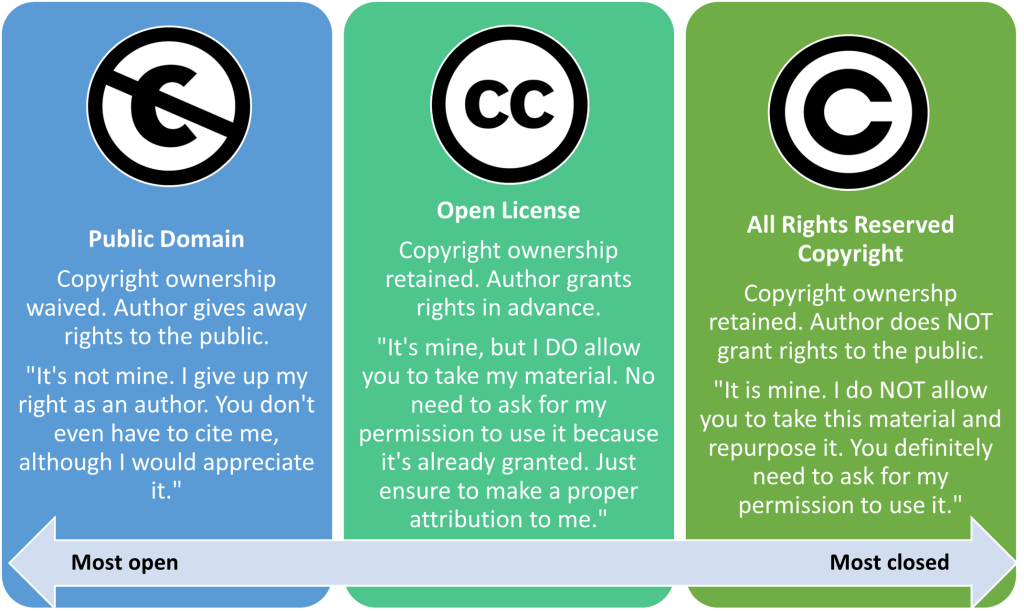Public Domain or Open Licensing?
Understanding the difference between public domain and open licensing (Creative Commons). They both grant free access to the materials, but the scope and nature differ entirely.
Open licensing recognizes clear ownership of intellectual property, and openly licensed works are still protected under copyright law, whereas works in the public domain are not covered by copyright law. Therefore, users must follow the license requirements when using openly licensed materials. This does not apply to public domain works.
This infographic illustrates the differences between public domain, open license, and all rights reserved copyright:

Adapted from Iowa OER CC-BY 3.0
Source: “Get Creative!” by Creative Commons is licensed under CC BY-SA 4.0
Creative Commons Licenses
Most OERs have a Creative Commons license on them. Authors can choose from various CC licenses, and they can be mixed and matched as needed. Many licenses allow users to edit and customize the materials for different uses. Most of the licenses require users to provide credit to the original creator. Some licenses specify that you can remix and reuse, but not for commercial purposes. There is also an option for limiting the creation of derivative works (although that wouldn’t be considered OER anymore). The primary CC licenses are listed below, but the Creative Commons website has more helpful information about license specifics, and their License Chooser tool is beneficial for navigating the decisions to make and generating a license for your work.
All images courtesy of Creative Commons.
 Attribution (BY) – NonCommercial (NC)
Attribution (BY) – NonCommercial (NC)
 Attribution (BY) – ShareAlike (SA)
Attribution (BY) – ShareAlike (SA)
![]()
 Attribution (BY) – NonCommercial (NC) – ShareAlike (SA)
Attribution (BY) – NonCommercial (NC) – ShareAlike (SA)
![]()
 Attribution (BY) – NoDerivatives (ND)
Attribution (BY) – NoDerivatives (ND)
![]()
 Attribution (BY) – NonCommercial (NC) – No Derivatives (ND)
Attribution (BY) – NonCommercial (NC) – No Derivatives (ND)
